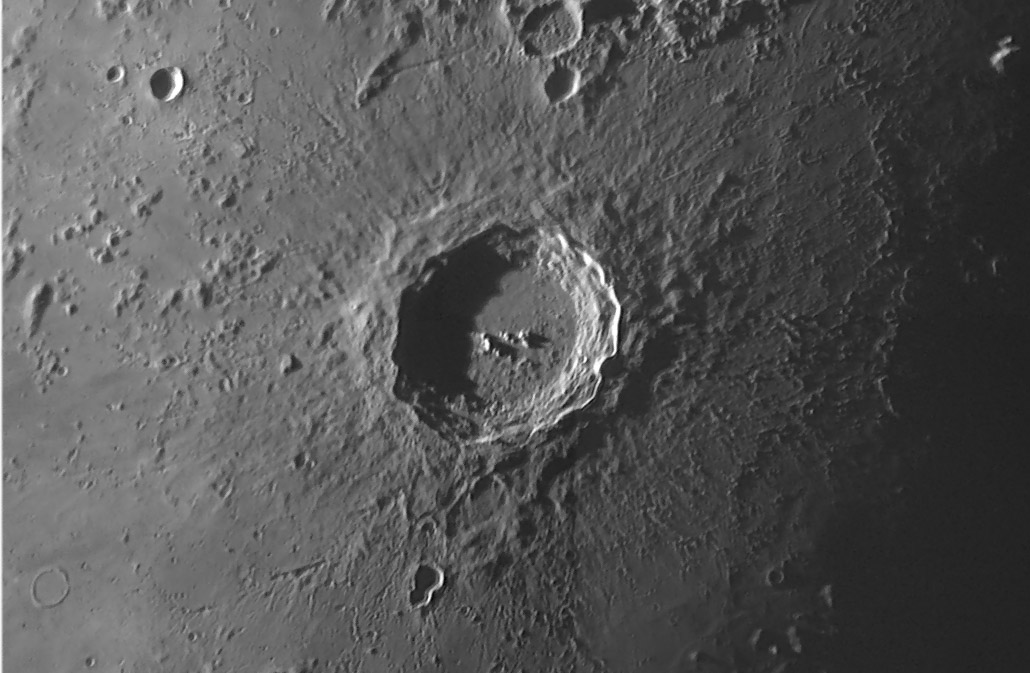
image by Mick Hyde
Like a drunk on Sunday morning I always swear I won’t do it again. But then there is another temptation, another wonderful image comes in, and I relapse and publish another view of Copernicus. This most viewed and most imaged crater is fascinating because it is so well placed and shows what a really fresh large crater looks like. Even though Copernicus is 900 million years old you can almost imagine that the dust has just stopped falling and the impact melt on the floor is still glowing. Its staggering to realize that every crater on the Moon was originally surrounded by a similar broad dense concentration of secondaries and short ridges and clots of still hot debris. Over time the gardening due to millions of small impacts smooths out the surface roughness, and over longer time scales the terraces begin to get smoothed out too, and the floor fills with material that slid down the walls. And the crater, and its surroundings, become commonplace, hardly worth a relapse of resolve.
Technical Details:
August 7, 2007. Celestron 9.25 scope, 2.5x TV Powermate, UV/IR filter, DMK21AF04AS camera, 6 image mosaic, 6 x 1000 frame avi’s using 250 from each, processed in Registax and Paintshop Pro.
Related Links:
Rükl plate 31
Mick’s website
Yesterday's LPOD: The Most Magnificent Flow on the Moon
Tomorrow's LPOD: A Formation of Surprise
COMMENTS?
Register, Log in, and join in the comments.



